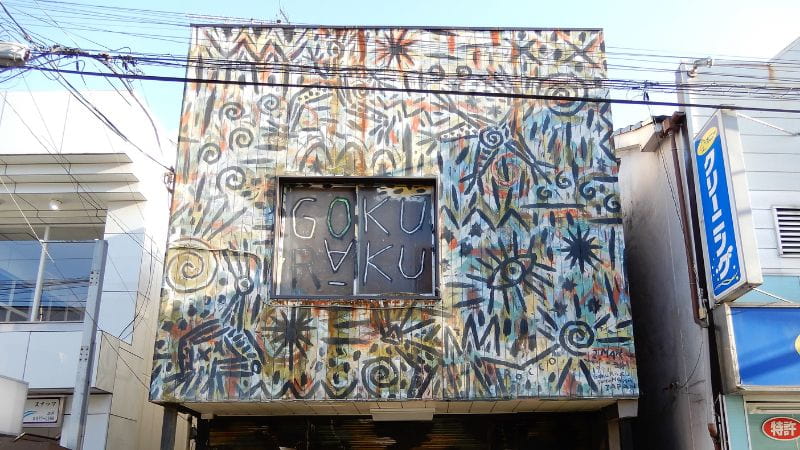
Для начала давайте сравним фрески обоих магазинов, посетив «GOKURAKU» в Хакураку.
Как сообщалось ранее, джаз-кафе «Chigusa» в Ноге сносят для обновления, поэтому увидеть внешние стены уже невозможно.
Поэтому я решил запечатлеть музыкальный магазин «GOKURAKU» в Хакураку, где фреска все еще существует.

Магазин находился недалеко от западного выхода со станции Хакураку на линии Токю Тойоко.

Впереди — бывший перекресток шоссе Цурумаи.
About: GOKURAKU
Gokuraku, translated as «paradise» in Japanese, often refers to the concept of a heavenly realm in Buddhist beliefs. It is depicted as a place of bliss and peace, free from earthly suffering and filled with happiness. The idea of Gokuraku is significant in various sects of Buddhism, including Pure Land Buddhism, where it is central to the faith’s focus on salvation and enlightenment through the grace of Amitabha Buddha.
About: Chigusa
Chigusa is a historic Japanese tea jar, originally used in China for storing tea leaves before becoming highly prized in Japan’s tea culture during the 16th century. The vessel, notable for its large size and distinctive appearance with a brown and olive-green glaze, became an individualized object of appreciation among Japanese tea practitioners. Over centuries, Chigusa has been admired, named, and documented meticulously, embodying the deep aesthetic and philosophical value placed on tea ceremony utensils in Japan.






